Ski: 2023-2024 Fischer Ranger 108, 185 cm
Test Location: Crested Butte Mountain Resort, Colorado; Stevens Pass, Washington
Days Skied: 16
Available Lengths: 171, 178, 185, 192 cm
Blister’s Measured Tip-to-Tail Length (straight-tape pull): 183.4 cm
Stated Weight per Ski: 2120 grams
Blister’s Measured Weight per Ski: 2110 & 2117 grams
Stated Dimensions: 143-109-134 mm
Blister’s Measured Dimensions: 142.7-108.4-133.7 mm
Stated Sidecut Radius (185 cm): 18 meters
Measured Tip & Tail Splay (ski decambered): 68 mm / 33 mm
Measured Traditional Camber Underfoot: 2.5 mm
Core Materials: beech/poplar + titanal (partial layer) + fiberglass laminate
Base: sintered
Factory Recommended Mount Point: -9.6 cm from center; 82.1 cm from tail
Boots / Bindings: Tecnica Mach1 MV 130, Atomic Hawx Ultra 130, Lange RS 130 / Tyrolica Attack 13
[Note: Our review was conducted on the 22/23 Ranger 108, which returned unchanged for 23/24]

Intro
Fischer overhauled their Ranger line of freeride skis for the 22/23 season, with the updated skis carrying over into the 23/24 season.
The second-widest ski in the series, the Ranger 108, technically fills the void left by the previous Ranger 107 Ti, but they are very different skis. We’ve already discussed the revised Ranger 102 at length, but now it’s time to delve into the details of the 108. But first, let’s cover the design of the ski, starting with some background info in our Blister Summit Brand Lineup video with Fischer:
What Fischer says about the Ranger 108
“This powder specialist is a must-have for all adventurous freeriders. The Ranger 108 is a powerful yet playful freeride ski that still has precise edge control. With poplar/beech wood core construction, Shaped Ti, and a freeski rocker, this ski really shows off its capabilities making big turns in powder.
The full potential of the Ranger 108 is on display in deep, fine powder. It was developed for wide-ranging versatility on powder days with stability and maximum control on any descent. Its excellent performance comes from the calibrated Flex Cut and Shaped Ti reinforcement.
The Ranger ski line is the result of 30 months of intense collaboration between team athletes, shop employees, ski engineers, and ski addicts with the aim of getting more out of every day spent on snow, regardless of conditions or the terrain. The skis in the Ranger range are made in Europe and have been developed with close attention to the selection of raw materials and the use of recycled materials to minimise our environmental impact.”
Construction
The Ranger 108 features a poplar / beech wood core, fiberglass laminate, sintered base, and a partial titanal laminate. The latter consists of a split piece of metal that covers the binding area and extends a bit toward the tips and tails; the narrower Rangers feature a slightly longer metal layer, while the wider Rangers have a bit less metal.
Shape & Rocker Profile
The Ranger 108 looks a whole lot like the Ranger 102. Both skis feature fairly blocky-shaped tips with moderately tapered shovels and tails, and they have fairly deep tip rocker lines but shallower tail rocker lines. As you’d expect, the Ranger 108 has slightly deeper tip and tail rocker lines than the Ranger 102, but the difference is extremely subtle.
Flex Pattern
Here’s how we’d characterize the flex pattern of the Ranger 108:
Tips: 6-6.5
Shovels: 6.5-7.5
In Front of Toe Piece: 8-9.5
Underfoot: 10
Behind the Heel Piece: 9.5-9
Tails: 9-8
The Ranger 108’s flex pattern feels nearly identical to the Ranger 102’s when hand flexing both skis; they have fairly soft tips and shovels and notably stiffer midsections and back-halves. However, their flex patterns feel a bit more different on snow (more on that in a moment).
Sidecut Radius
At 18 meters for the 185 cm length, the Ranger 108’s stated sidecut radius is a bit tighter than average for a ~108mm-wide ski, though not wildly out of the ordinary.
Mount Point
The Ranger 108’s recommended mount point is about -9.5 cm from true center, putting it pretty firmly in the directional / more rearward category.
Weight
The 185 cm Ranger 108 weighs a little over 2100 grams per ski, which is neither super light nor super heavy by today’s standards.
For reference, here are a number of our measured weights (per ski in grams) for some notable skis. Keep in mind the length differences to try to keep things apples-to-apples.
1800 & 1804 Head Kore 105, 184 cm (21/22)
1820 & 1821 Majesty Havoc Carbon, 186 cm (20/21–22/23)
1833 & 1894 Head Kore 111, 184 cm (22/23)
1836 & 1838 Armada ARW 106 UL, 180 cm (21/22-22/23)
1863 & 1872 Atomic Bent 110, 188 cm (22/23)
1875 & 1881 Line Sir Francis Bacon, 184 cm (19/20–22/23)
1905 & 1919 J Skis Slacker, 188 cm (20/21–21/22)
1920 & 2006 RMU North Shore YLE 110, 186 cm (21/22–22/23)
1946 & 1962 Black Crows Atris, 184 cm (22/23)
1947 & 2011 4FRNT Devastator, 186 cm (20/21–22/23)
1951 & 1953 Elan Ripstick 106, 188 cm (20/21–22/23)
1951 & 1957 RMU Apostle 3.0 106, 184 cm (21/22–22/23)
1964 & 1972 Moment Deathwish, 184 cm (19/20–20/21)
1970 & 1993 Moment Deathwish 104, 184 cm (21/22–22/23)
1989 & 2000 Folsom Cash 106, 188 cm (22/23)
1997 & 2001 Zag Slap 104, 188 cm (21/22-22/23)
2008 & 2065 Wagner Summit 106, 186 cm (20/21–22/23)
2009 & 2010 Rossignol Sender 104 Ti, 186 cm (22/23)
2011 & 2028 Moment Wildcat 108, 184 cm (19/20–20/21)
2011 & 2046 Elan Ripstick 106 Black Edition, 188 cm (21/22–22/23)
2022 & 2046 DPS Foundation Koala 103, 184 cm (21/22–22/23)
2027 & 2052 K2 Reckoner 112, 184 cm (20/21–22/23)
2046 & 2120 Black Crows Corvus, 188 cm (18/19–22/23)
2057 & 2061 Fischer Ranger 102, 183 cm (22/23)
2060 & 2075 4FRNT Hoji, 184 cm (21/22–22/23)
2073 & 2074 Season Nexus, 183 cm (20/21–22/23)
2077 & 2097 Nordica Unleashed 108, 186 cm (22/23)
2110 & 2117 Fischer Ranger 108, 185 cm (22/23)
2110 & 2119 Moment Wildcat 108, 190 cm (19/20–20/21)
2112 & 2125 4FRNT MSP 107, 187 cm (18/19–22/23)
2068 & 2178 Salomon QST 106, 181 cm (22/23)
2120 & 2134 Blizzard Rustler 10, 188 cm (19/20–22/23)
2138 & 2172 Rossignol Sender 106 Ti+, 187 cm (22/23)
2145 & 2167 Sego Big Horn 106, 187 cm (20/21–21/22)
2165 & 2219 Icelantic Nomad 105, 191 cm (19/20–20/21)
2170 & 2180 Dynastar M-Free 108, 182 cm (20/21–22/23)
2177 & 2178 Moment Commander 108, 182 cm (20/21–22/23)
2182 & 2218 Nordica Enforcer 110 Free, 185 cm (17/18–22/23)
2196 & 2211 Rossignol Sender Free 110, 184 cm (23/24)
2220 & 2237 K2 Mindbender 108Ti, 186 cm (22/23–23/24)
2228 & 2270 Sego Comp 110, 187 cm (20/21–21/22)
2232 & 2242 Blizzard Cochise 106, 185 cm (20/21–22/23)
2233 & 2255 Nordica Enforcer 104 Free, 186 cm (19/20–22/23)
2230 & 2290 Line Blade Optic 104, 185 cm (22/23)
2243 & 2287 Salomon QST Blank, 186 cm (21/22–22/23)
2258 & 2303 Wagner Summit 107, 186 cm (21/22–22/23)
2295 & 2344 J Skis Hotshot, 183 cm (20/21–22/23)
2302 & 2342 Dynastar M-Free 108, 192 cm (20/21–22/23)
2312 & 2386 Prior Husume, 188 cm (17/18–22/23)
2328 & 2370 Rossignol Sender Free 110, 191 cm (23/24)
2353 & 2360 Volkl Katana 108, 184 cm (20/21–22/23)
2412 & 2426 Rossignol Sender Squad, 194 cm (21/22–22/23)
2438 & 2492 Rossignol Blackops 118, 186 cm (17/18–23/24)
2449 & 2493 J Skis Hotshot, 189 cm (20/21–22/23)
Now, onto how all of this translates on snow:
FULL REVIEW
Powder
Dylan Wood (5’10.5″, 155 lbs / 179 cm, 70 kg): At 108 mm underfoot, the Fischer Ranger 108 could be considered a wide all-mountain ski or a narrow powder ski, depending on who you ask. But regardless of how you choose to categorize it, the Ranger 108 offers excellent performance in powder for its width.
This ski provides great flotation relative to how wide it is. Its wide, soft tips easily bend in powder and stay above the snow surface, regardless of the angle of the slope. I was quite pleased with the Ranger 108’s flotation in both flatter meadows and steep chutes, whether I was moving quite quickly or pretty slowly. The Ranger 108 also feels accommodating to a wide variety of skiing stances in powder. Its tips still plane well when skied with a more forward, directional stance, but the Ranger 108 is also happy to be skied with a more centered stance in powder.
Not only is this ski impressive for its class in terms of pure flotation, but the Ranger 108 is also quite maneuverable and loose in powder. When you want to dump speed and throw this ski sideways, it is quite easy to do so. Additionally, this ski also makes long, drifted turns quite well in powder without wanting to cut hard across the fall line. At slower speeds, the Ranger 108 is also easy to pivot and slarve around in powder, with its relatively low swing weight also allowing it to be flicked around somewhat easily. There are definitely looser skis out there, such as the 182 cm Dynastar M-Free 108, but the Ranger 108 can also be driven harder through the shovels than that ski.
Luke Koppa (5’8”, 155 lbs / 173 cm, 70 kg): Agreed. I think this is a very good powder ski for its width, and while I didn’t have it with me on our deepest days this season, I think it’d take a pretty historic storm day in Crested Butte for me to be really wishing for more flotation than the Ranger 108 can offer. And I’ll echo Dylan in that this (directional, not wildly rockered) ski is quite maneuverable in soft snow, which is a big plus when navigating tight trees and the like.
Charlie Schayer (6’3”, 190 lbs / 190 cm, 86 kg): I completely agree with Dylan’s and Luke’s take on the Ranger 108’s powder performance. This ski punches way above its width in this category. The combination of its rocker profile and soft flexing tip allows the ski to plane exceptionally well. Reiterating Dylan and Luke, I found the Ranger 108 to be a really maneuverable ski in powder at slow speeds, the tips do not require much speed to glide above the surface. To be perfectly frank, I have trouble seeing the Ranger 108 as anything other than a narrow powder ski.
Jonathan Ellsworth (5’10”, ~180 lbs / 178 cm, 81.6 kg): We always like to award “truth in advertising around here, and if you look at Fischer’s product copy of this ski (see our First Look, above), Fischer calls the Ranger 108 “a powder specialist.” You get a gold star for that, Fischer, because (spoiler alert) powder is where this Ranger 108 truly shines. It’s easy, maneuverable, offers good flotation, and in deeper snow, feels like it has a big sweet spot. I.e., it feels optimized for powder skiing.
Soft Chop
Dylan: In soft chop, the Ranger 108 remains forgiving, quick, and loose. It’s easy to flick and slash this ski around, and it performs best with a more dynamic, playful approach in soft chop, or simply skiing slower. That’s because, at higher speeds and in rougher snow, the Ranger 108 starts to feel less composed. It definitely isn’t some noodle (it is much, much more inherently stable than something than the Line Sir Francis Bacon), but it also isn’t nearly as powerful as the Ranger 107 Ti, or even some more stable all-mountain skis such as the Rossignol Sender 106 Ti+.
And I think that’s fine. The Ranger 108 is compliant, maneuverable, and easygoing at slow speeds, and when that is taken into consideration, its stability in rougher snow is very reasonable, if not impressive. Those who want to charge hard and blast through piles of set-up chop have better options, but those who are willing to take a more controlled, dynamic approach to chop will be quite pleased with the stability that the Ranger 108 offers.
Luke: In low-density chop, like you’d find during the first hour or two of a resort powder day, I can still ski the Ranger 108 pretty hard and fast. However, as Dylan noted, this isn’t a super planted or stable ski, and I found myself having to dial back my speed and make more controlled, precise turns on it once the chop had set up a bit — it just doesn’t have the combo of mass and stiffness to encourage me to try to blast straight through denser, cut-up snow. But as we noted above, it’s a pretty easy ski to make those sort of controlled, pivoted turns on, so once I figured out its speed limit, I had a ton of fun slashing and airing my way through soft, choppy snow on the Ranger 108.
Charlie: Most of the time I spent on the Ranger 108 was on days that we received between 4-8” of snow. Resort powder gets skied out pretty quickly, and I was still having fun skiing the Ranger 108 when the pow turned soft chop, under the caveat that I was skiing dynamically and treating the forming moguls as obstacles that needed to be maneuvered either around or over. I was both unwilling and unable to really charge hard on this ski — I lost confidence as I felt the ski losing composure at speed.
Jonathan: To sum up: in truly-soft chop, this ski is still a lot of fun.
Firm Crud
Dylan: The Ranger 108 definitely isn’t a variable-conditions charger like the old Ranger 107 Ti was.
[Jonathan: This might be the understatement of the year.]
Dylan: It definitely feels like a soft-snow-oriented ski that still does well in firm conditions so long as the snow is consistent (like chalk or wind buff). It does not feel very damp or composed when trying to ski hard through rough, firm snow. Instead, it’s easy to slip and slide around, and lets you find your way to better, softer snow.
Luke: Yep, this isn’t a charger. But the ski does make it pretty easy to slip and slide through nasty conditions as you hopefully make your way to more forgiving snow. I had to focus pretty hard on my technique in order to feel in control of the Ranger 108 in high-speed rough-snow scenarios (e.g., the runouts following Crested Butte Mountain Resort’s West Wall or Paradise Cliffs zones).
Charlie: This is one of the areas where I felt like I was finding the Ranger 108’s limitations. I agree with Dylan and Luke that I was able to make my way through firm chop but I found my skiing style became very defensive until I could find the friendly confines of soft snow.
Jonathan: 100% to all of the above. It was actually a bit alarming to me how, across my 5 days on this ski, I was absolutely thrilled with this ski in powder, then found it to be quite challenging to ski as the moguls got firmer and bigger in CB 4-5 days after a storm. That said:
(1) I think that more finesse-oriented and more balanced skiers than me will get along better with this ski than I did. I.e., the more deliberate and controlled your turns are, the less problem you might have.
(2) Let’s go back to how Fischer is positioning the Ranger 108: “a powder specialist.” Given that, I am not going to criticize a company — or a product — when I think they have very accurately described what they’ve built. We all agree that this is an excellent pow ski. We also are in (at least relative) agreement that this is not some firm-conditions charger — and Fischer never claimed it was So we’re all clear here, right?
One more thought: we have only skied the 185 cm Ranger 108. It’s possible that the 192 cm Ranger 108 feels a bit more capable when it comes to firmer conditions, but we aren’t expecting there to be a significant difference.
Moguls, Trees, and Tight Terrain
Dylan: Again, this is an impressively maneuverable ski, and it feels quite at home in trees, bumps, and other forms of tight terrain. It’s easy to slide and pivot the Ranger 108 around through tight spots; its swing weight is low relative to its overall weight; and it is certainly happy to get airborne and be flicked around from the ankles.
And to reiterate another point, this maneuverable, compliant ski also doesn’t just fall apart at speed. When skiing tight terrain more aggressively, it still provides a level of stability that advanced and expert skiers can enjoy. Its relatively soft shovels don’t provide a ton of support when trying to zipper line moguls from a more forward stance, but the flex pattern of the ski also feels balanced because its tails are also pretty forgiving. This ski has a pretty big sweet spot, definitely larger than the narrower Rangers.
Luke: I’ll focus on that last point since this is where I noticed the biggest difference between the Ranger 102 and Ranger 108 (they otherwise feel very similar in my mind). But the big thing for me was that the Ranger 108’s flex pattern just felt a bit more intuitive; while its shovels are fairly soft and not very precise-feeling (like the 102), its tail doesn’t feel disproportionately stiff, which I often felt on the Ranger 102, most notably in big, tightly packed moguls.
With the Ranger 108, the ski’s sweet spot felt bigger, which in turn left me feeling more confident about pushing it hard in tight, technical terrain, since I wasn’t as worried about its tails bucking me as soon as I got back on them. The Ranger 108 wouldn’t be my top pick for someone who’s just learning to ski moguls, but it’s the most forgiving out of the Rangers I’ve skied (all but the 116), and because of this, I also found myself pushing it the hardest in challenging terrain. It feels quick, easy to pivot, and forgiving enough that I really enjoyed skiing it with a dynamic, light-on-my-feet style.
Charlie: I enjoyed skiing the Ranger 108 in mellower glades where I could ski playfully with the terrain and get creative with my line choices. To reiterate what has previously been mentioned, this ski is rewarding for skiers with a dynamic style. I found the Ranger 108 to perform fairly well as long as I was skiing actively and engaged. However, on really steep terrain I did not feel very confident on this ski; I could feel the ski over-flexing, which would restrict my ability to set my downhill edge. This lack of support I was feeling could be a result of my size compared to the other reviewers, and needless to say, Crested Butte is a very steep mountain and the conditions can get pretty firm. I imagine that several of my favorite runs would be downright terrifying when the snow gets chalky.
Jonathan: For me, it’s pretty simple: in powder and soft snow, I really liked this ski everywhere off-piste. The firmer things got, the less stable the ski felt, and the smaller its sweet spot felt to me.
Groomers
Dylan: For a 108 mm-wide ski, the Ranger 108 is also impressive on piste. It is easy to get on edge and start carving across the fall line, and it provides pretty good edge grip for how wide it is. Additionally, the Ranger 108’s relatively soft extremities can be bent into tighter turns, and it releases some energy and pop out of each turn, resulting in an exciting ride on groomers.
At very high speeds and on rougher groomers, it can get knocked around a bit and loses precision. But, on somewhat smooth and soft groomers, the Ranger 108 is a lot of fun, especially given how well it handles soft, off-piste terrain.
Luke: I really like this ski on soft-ish groomers, but my infatuation fades once I hit some firmer, scraped-off snow. Like the other Rangers, I find that I get most of my edge hold from the binding area of the Ranger 108, with a less precise, more vague feeling from the tips and tails. Because of this, I don’t feel very inclined to really lay it over on very firm, smooth snow, but for a 108mm-wide ski, I’d say its carving performance is totally adequate.
Jonathan: I fully agree with Luke here.
Playfulness & Mount Point
Dylan: I’d consider the Ranger 108 a playfully directional ski. There are lots of more forward-mounted, more rockered skis that are more playful and freestyle-friendly overall. But the Ranger 108 is a loose, surfy ski, it’s pretty energetic, and its soft extremities make it fun to mess around on at slower speeds, doing butters, presses, etc.
The Ranger 108 also has just enough tail splay to ski switch on mostly 2-dimensional snow, and it feels pretty balanced in the air for how rearward its mount point is. I think that skiers who ski with a very centered stance and don’t need much support from the shovels would be fine mounting 1-2 cm forward on this ski, but I also think the other 95% of skiers out there ought to stick to the recommended line.
Luke: I’ll echo Dylan here, and just add that I did ski the Ranger 108 with it mounted about +2 cm from its recommended line, which resulted in a mount point of about -7.5 cm from true center. Whereas I preferred the Ranger 102 with it on its recommended mount point, I preferred the Ranger 108 mounted slightly forward, since I wasn’t as worried about creating “more tail” by moving the bindings (due to the Ranger 108’s tail being more forgiving). I agree that most folks should stick to the recommended mount point, but those who prefer more centered mount points might want to consider mounting a cm or two closer to center on the Ranger 108.
Who’s It For?
Dylan: I think the Ranger 108 is ideal for skiers who are looking for a versatile, easygoing ski that’s maneuverable at slower to moderate speeds but that can also handle aggressive skiing in consistent snow. The Ranger 108 offers impressive maneuverability in tight terrain and bumps, but may then surprise you with its stability when skied hard. It also offers impressive flotation and carving performance for its width, and it feels practical so long as snow conditions are soft and/or consistent. It’s accommodating to a variety of skiing stances and styles, and is quite easy to get along with.
Luke: In my mind, the Ranger 108 is best suited to directional skiers who want something that’s quite maneuverable and agile, and that will mostly be used in soft and/or consistent snow. There are lots of better options for those who want something particularly damp and stable in chop and crud; there are skis in this class that are more precise on firm snow; and there are much more freestyle-friendly alternatives. But the Ranger 108 handles a lot of conditions and terrain pretty well, primarily standing out to me due to its maneuverability, flotation, and agility in tight terrain.
Charlie: I personally found the Ranger 108 to have some drawbacks, but was an incredibly fun ski in soft snow. I stand by my earlier comment that this is a narrow powder ski. I think it would be an excellent choice for skiers in the continental snowpack who are looking to add a practical ski to their quiver. The Ranger 108 provides plenty of floatation without being too much of a niche tool. Additionally, I think this would make a really good 50/50 (sidecountry) ski. We are all in agreement that this is a very good powder ski. The Ranger 108 paired with a Shift or Duke or CAST system would be a great rig for skiing the resort in the morning and then slipping out the gates for a few sidecountry laps.
Jonathan: Dylan, Luke, and Charlie have nailed it. And if you are typically touring for good snow, then I second Charlie’s thought about making this your resort pow ski and your touring-for-good-snow ski. Fischer set out to make a powder specialist, and I think they’ve very much succeeded.
Bottom Line
The old Fischer Ranger 107 Ti occupied a niche in the market for skiers looking for a very powerful and precise all-mountain charger. This new Ranger 108 is nothing like it, but it’s also a ski that’s more practical for many, many more skiers out there. With its mix of maneuverability, stability, and adaptability, the Ranger 108 should be on the radar of lots of skiers looking for a soft-snow-oriented all-mountain ski or an excellent narrower powder ski.
Deep Dive Comparisons
Become a Blister Member to check out our Deep Dive Comparisons of the Ranger 108 to see how it compares to the Fischer Ranger 107 Ti, Fischer Ranger 102, K2 Mindbender 108Ti, Blizzard Cochise 106, Volkl Katana 108, Salomon QST 106, J Skis Hotshot, Elan Ripstick 106, Nordica Enforcer 110, Nordica Unleashed 108, Black Crows Atris, Black Crows Corvus, Icelantic Nomad 105, Rossignol Sender 106 Ti+, Faction Dancer 3, Blizzard Rustler 11, Line Blade Optic 104, Dynastar M-Free 108, 4FRNT MSP 107, & Shaggy’s Ahmeek 105.



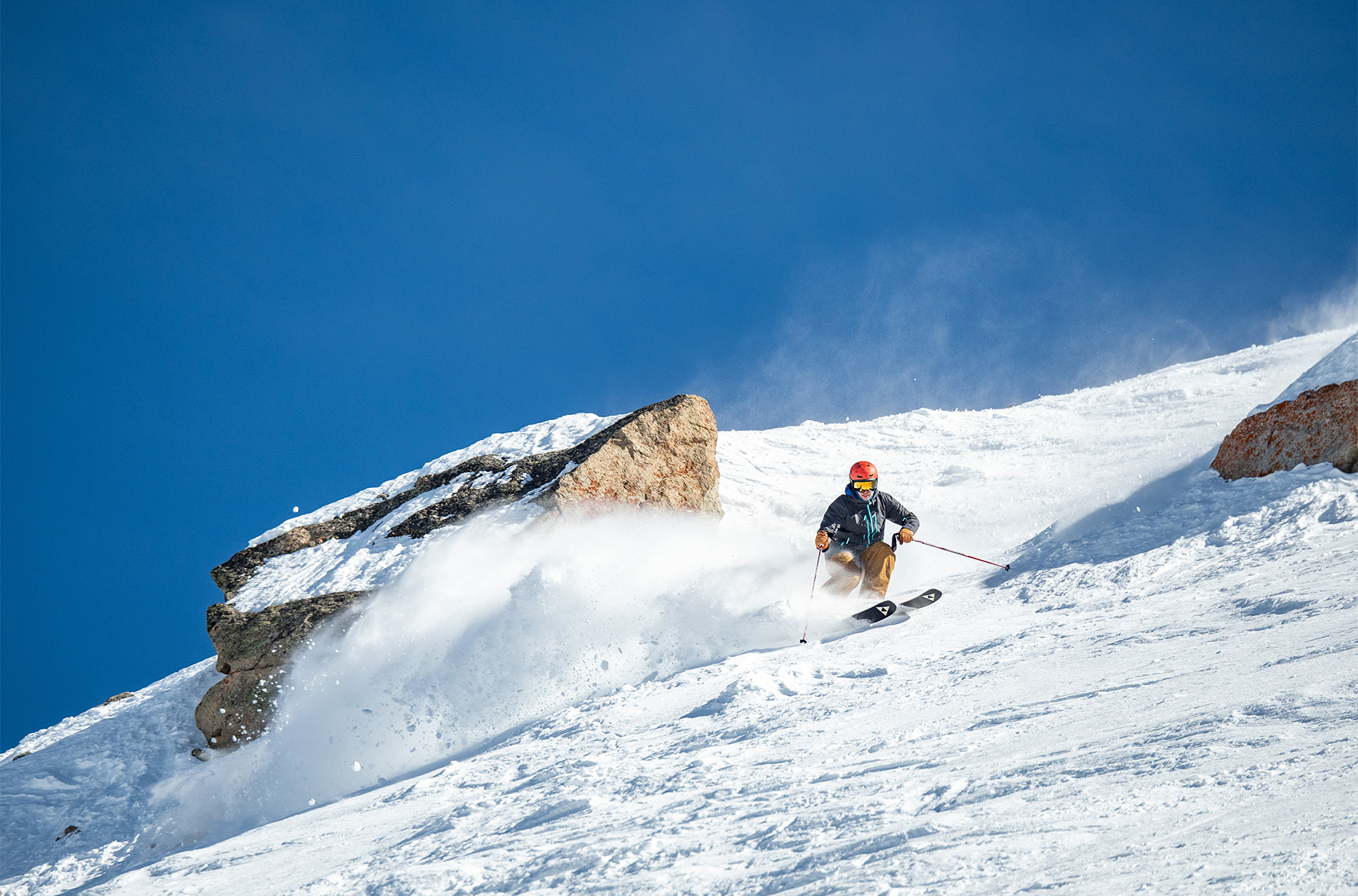
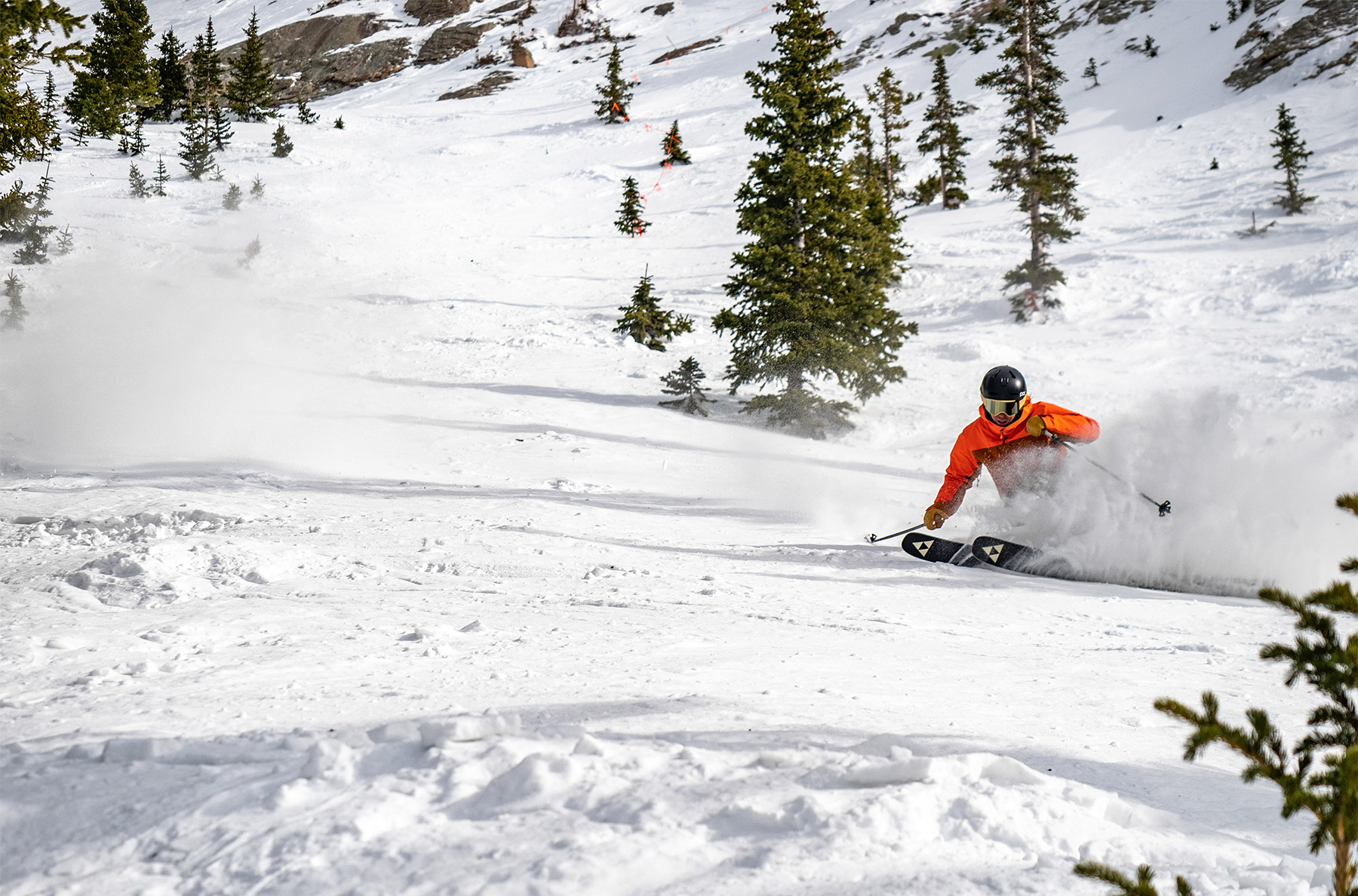
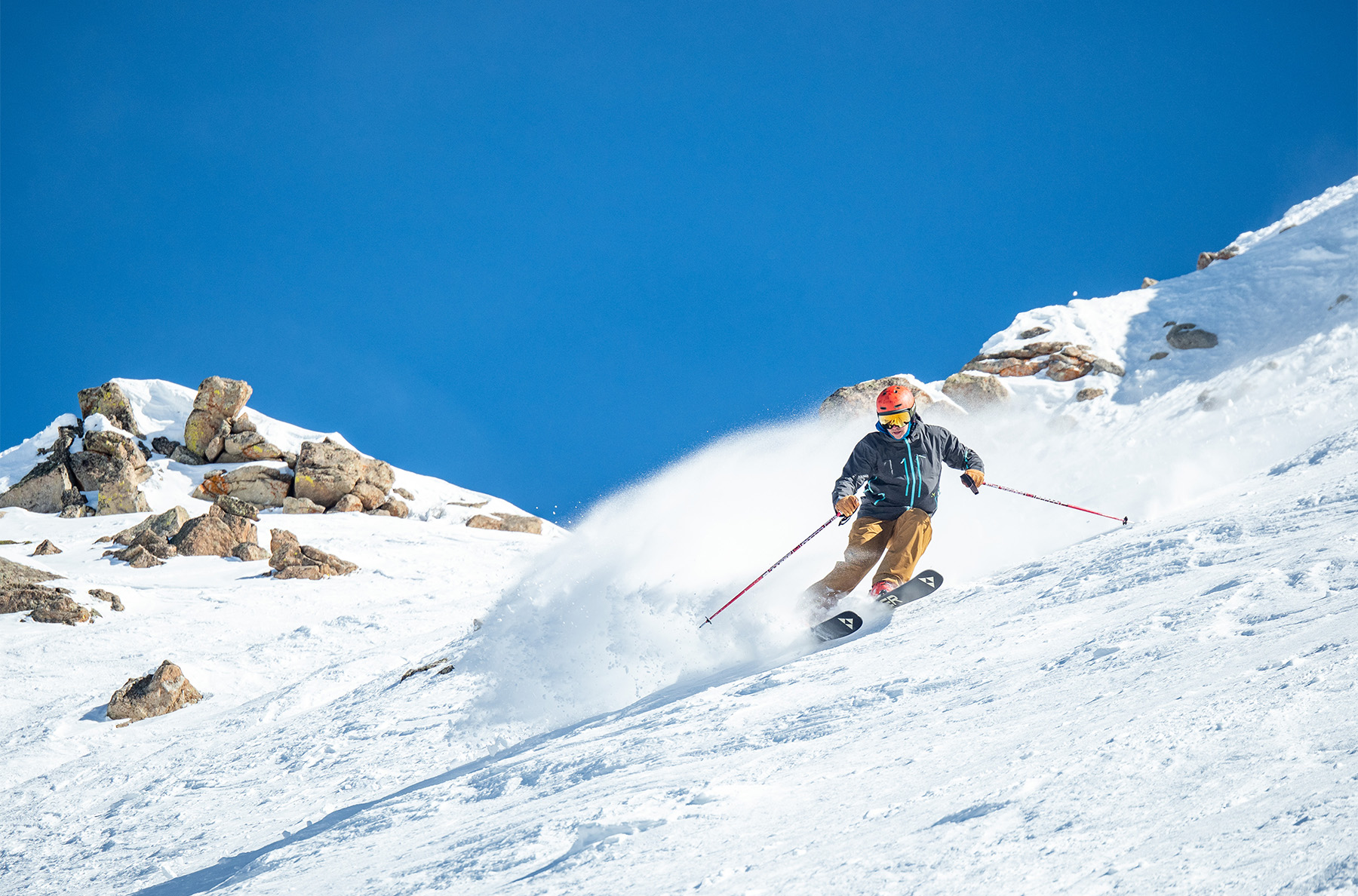
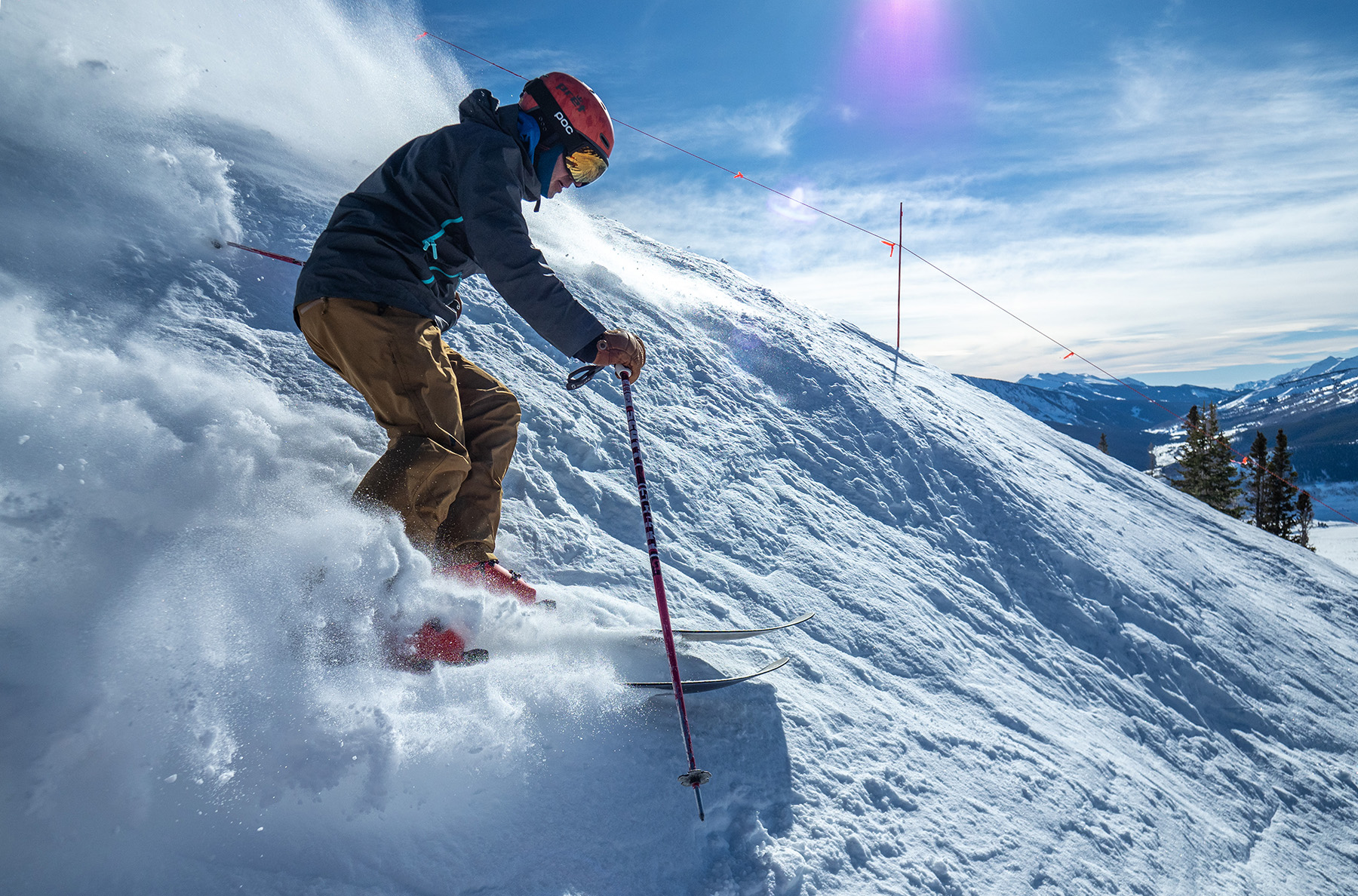
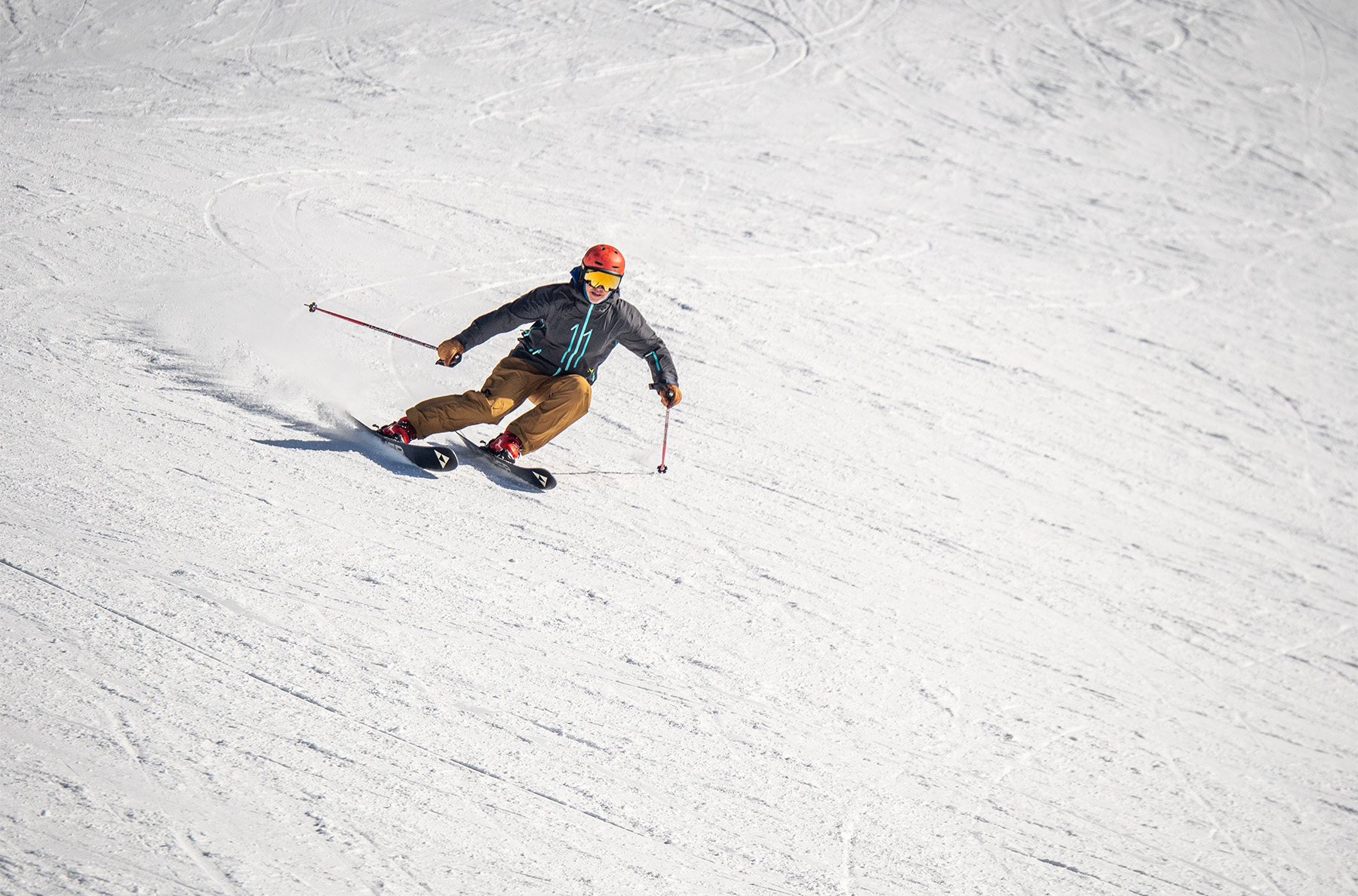
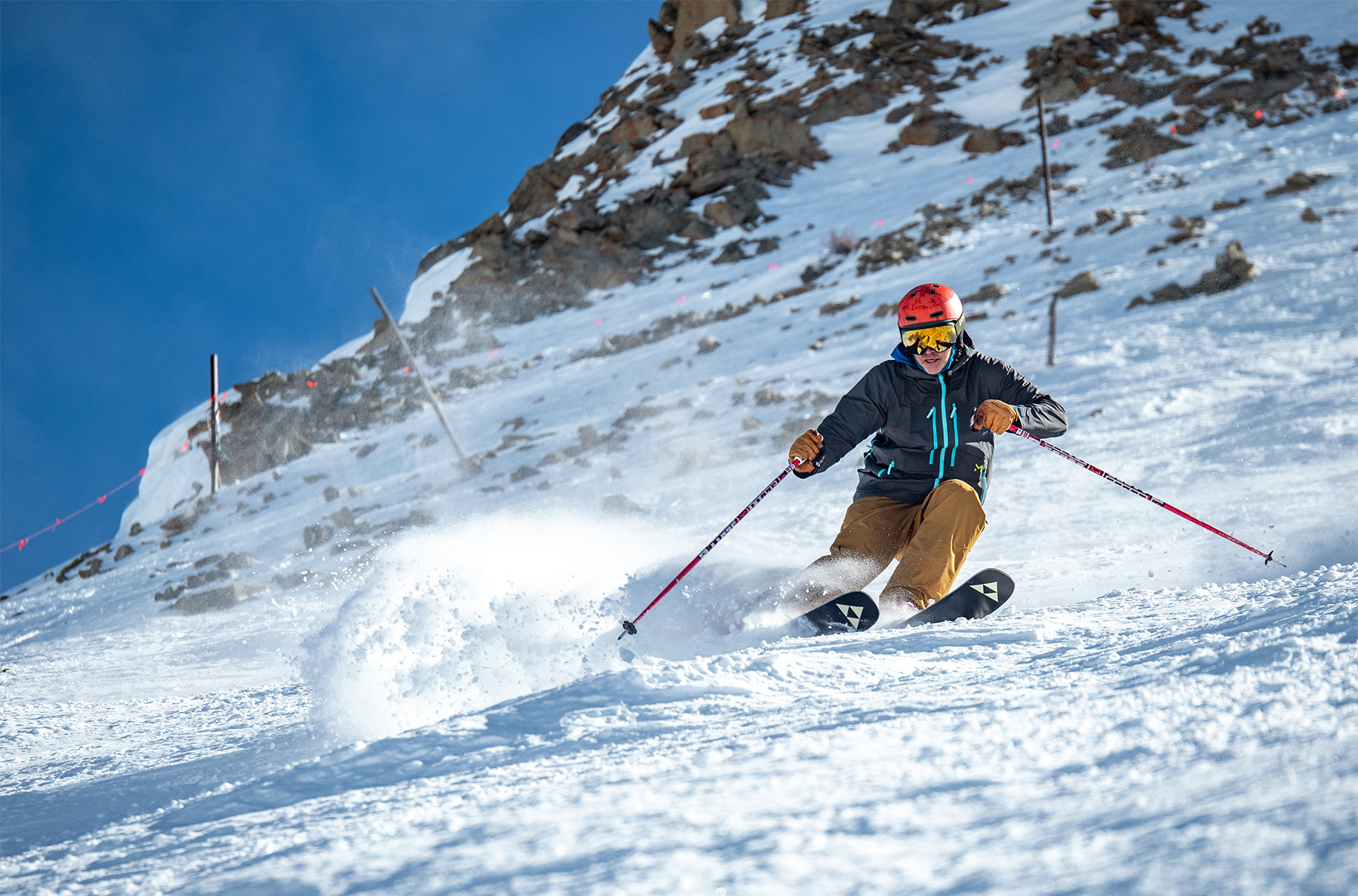
Hi there. Looking forward to some info regarding this ski. I bought the Fischer Ranger 107 ti last year, and this must be the model that replace it. I have skied it in the Alps in St. Anton. The Ranger 107 ti carves amazingly and seriously holds a line, considering how wide it is. It is like a race ski only wider. I is not easy and forgiving when the off-piste has a crush, as it will primarily want to carve on hard surface. I am looking forward the this new ski :-)
This appears to be nothing like the Fischer 107Ti, which is one of my favorite skis in the class (at 189 cm), both on- and off-piste. The best way I can describe it is that it was obviously some ex-racer’s idea of an “all-mountain charger”. It’s all about powerful, precise, directional skiing. I’m a fairly big ex-racer (the sort of person who considers a 140 boot to be “medium flex”), and I get along with it very very well.
The 108 appears to have more taper, more and slightly deeper rocker, and a significantly softer shovel and forebody (though still a pretty stiff if perhaps slightly less flat tail). Probably not my cup of tea, but I imagine there will be people who find it a lot easier to handle provided they can stay off of those tails.
Looks VERY interesting to me. Numbers indicate a possibly “carvy” powder ski that isn’t overly stiff.
I had the OG Ranger 115 ti pow skis, and they were just too darn stiff for me as a pow board.
Fake Question: Does Fischer have the ability to make a ski that does NOT carve well?!
I was hoping this would potentially be a chargier/more stable at speed Enforcer 110 Free, but it looks like it’ll be the opposite :(
I’d be really interested as to an opinion of the relative merits of the new 2023 Ranger 108 vs 2023 QST 106 vs 2023 QST Blank… I’m considering updating my pow skis pre-Japan 23 mission. I’ve had the 2017/2018 (? the fluoro orange ones) QST 106’s mounted with binding freedom inserts for both Fritschi Tecton 12s / marker Jester bindings as my 50/50 skis and have loved that ski to death! Whatever I replace the 106s with needs to be light enough to manage full day tours, but still burly enough to rail through chop at decent speed inbounds…. and I like that feeling of getting pulled into a turn when laying them over. I am a more directional skier who likes to load the shovels with a fairly forward, attacking stance, but still likes to spin 3s / 5s when opportunities arise. Too old and stiff for any park skiing nonsense these days! Can’t wait for the deep dives on the new Ranger series – I’ve been fairly brand loyal to Salomon in recent times but the Ranger series have me interested!
I liked Ranger 108 two generations ago and was way overdue for a new pair so I got this new one in 185cm. A very different ski.
Encourages clean turns in neutral stance. It seems to be a good, educational and a fairly accessible tool for intermediate-advanced skiers.
The skis easily performed all kinds of required turns when I didn’t have time to switch to a carving ski on a prep clinic for an instructor’s exam.
The factory tune was very aggressive and I hated it until I thoroughly detuned tips (a big part of the front of the ski) and tails.
The ski is predictably awesome in powder and and soft snow. Good edge hold in firmer snow. Torsionally feels very supportive and stiff. I didn’t feel that it can do high edge angle carves (which my previous ski – 110mm Rossi S6/Sickle, a favorite of Blister 10 years ago, – was happy to do in edge-able snow). Clean technique in moguls works really well.
If you like to drive the fronts of the ski, this is not the ski to do it. It is also not a damp ski, and a fairly light one. So, for me this ski is not a reliable friend when I need deal with unexpected dip or a bump driving the tips into it at speed, or when I need to straightline an uneven snow field. This ski can buck me around some. I figured that, when the middle cambered part of the ski needs to flex, it feels a bit on the stiff side and returns energy too quickly. Plus, again, the ski is quite light (you probably could mount it with touring binding for light touring duty).
Have any of you been on this ski mounted in front of the line say around -6 or -7?
Is there a full review on this ski coming anytime soon?
Yep! Next week…
Any word on this review dropping this week? Jonesing…
Our publication schedule got shifted around a bit. Full review is going up any minute now….
Any opinions on mount point? I have the previous models of 94 and 102, both of which are mounted forward of recommended mount point (both at around -6). Those are different skis, but I love them at this position. Per recommendation of the shop, I was thinking of mounting the 108 at -7. Opinions?
These skis have a notch cut into the binding area right at the recommended line to give the skis some flex there (they even call it the Flex Cut), so I’ve generally read that across the entire Ranger series there hasn’t been much benefit to moving the mounting points around.
I’ve skied these on the recommended mount point and likes them enough to buy a pair. I’ll probably mount +1-2 but have been looking for more feedback on the matter. Where have you been reading about the flex cut?
Skiessentials guys did a video review of the line, and some of the individual skis (102 and 96) and in all of them they discuss mount points / the flex cut. Blister guys also discussed moving the mount point not getting them much in the 102 review. Given the tech is the same across the line, I am generalizing but it’s seemed to hold true.
Should clarify the flex cut is only in the titanal layer, not in the whole ski.
I mounted +1.5 from recommended. I’ve thoroughly enjoyed skiing them in all Utah conditions this spring (except breakable crust) and haven’t found any significant cons. They have performed as expected. Looking forward to a 116 review as they look like they have a similar profile.
Assuming the 116 will have same excellent float and manoeuvrability characteristics, wondering if it will be relatively more stable in post fresh chop? Have you got time on the Ranger 116 and will you be reviewing it?
Bought a pair, mounted them +1 for 116 review
Having read the full review, I’m really glad that I grabbed a second pair of 189 cm 107Ti on sale as they were being discontinued. There’s really nothing like it right now as far as I know. The Faction Dancer (ex-Dictator) 3 measures up in beastliness, but that seems to be a lighter and more reactive ski (I have the 2 and the 4) and not really what I want in a 107-ish mm charger.
A random question: I’ve noticed that the Faction Dictator/Dancer line are unique among Faction’s skis in being made in Austria (the rest are made in Poland and the Czech Republic). I’ve also noticed some subtle manufacturing similarities between the Dancer 2/4 and the 107Ti, particularly in how the partial sidewall “merges into” the cap on either end (hard to explain, but different skis handle the resulting discontinuity in different ways). Does anybody know if Fischer is Faction’s Austrian contract manufacturer?
To my knowledge, the 20-21 factions were built in the Fischer plant. They (faction) moved to the amer plant after that
Is this the Rustler 10.5 if I am looking for a ski in between the R10 and the R11?
Kind of sounds like that to me.
Any word on a 116 review?
Hi! I´ m 6ft – 210lbs. Should I go 185 or 192 on these? How would they compare with the Dynastar M Free 108? Cheers!
When comparing the Mfree and Ranger 108s, please I’d like to hear – if possible – your opinions/differences on how they perform when snow is less than ideal… Thank you!
Hi, I would like to pair the 185cm 109 cm underfoot ski with the duke pt16 binding. What width brake should I go for 100 and strech it or 125 and risk it being to wide?